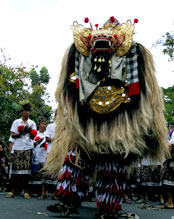

Touring around the island is also a great thing to do, to witness the actifity of the local artist, cultural perfomances and to see closer the lifestyle of the local comunity. Charming landscape of paddy terraces and others tropical plans, Balinese house compound and many Balinese Hindu temple spread over the island.


The gentle slopes and quiet back roads of lowlands are ideal for bicycling, while the shaded forest trails around Ubud make for fine walking excursions. Golfers can choose from several world-standard courses, including one in a volcanic crater at Bedugul.
For most of the world, Bali means beach resorts. The peerless beach at Kuta is the most famous, but Bali offers much more, ranging from hard-core surfing spots such as dreamland and Canggu to protected lagoons in Sanur and the gentle waves along at Lovina, suitable for older visitors and families. Beach resorts like Candi Dasa in the east offer a relaxing experience, usually including diving and snorkeling.
 A few few pictures tell more then a thousand words , so take a look at some photo's made in Bali ...
A few few pictures tell more then a thousand words , so take a look at some photo's made in Bali ...


















































